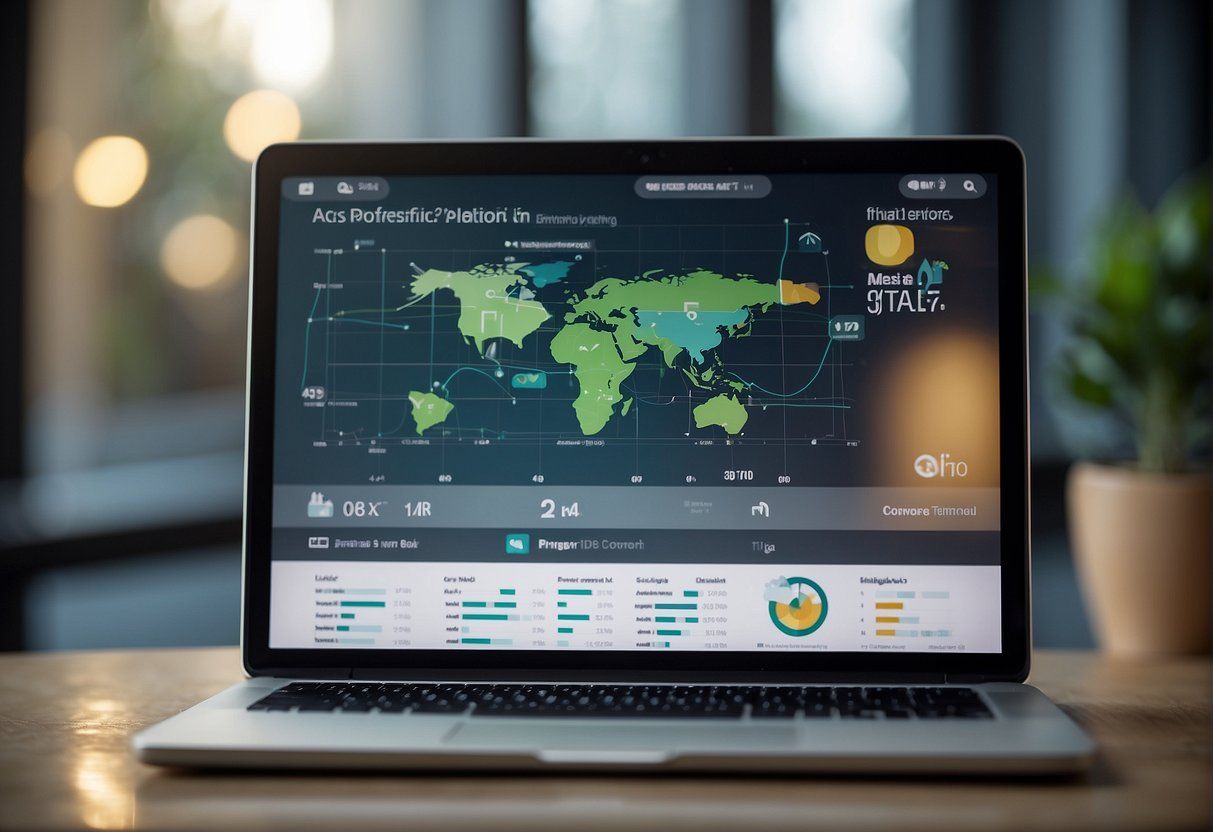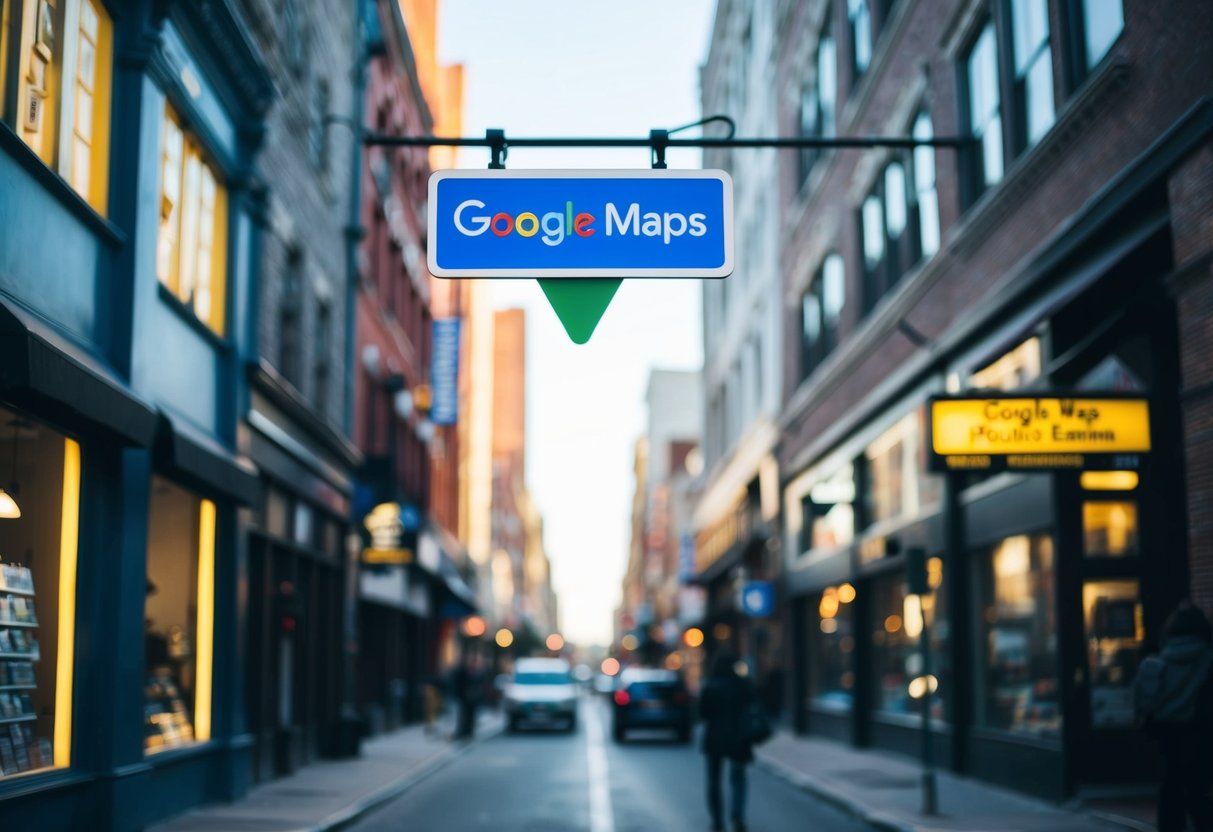New York City Lead Generation Los Angeles, CA Lead Generation Chicago, IL Lead Generation Houston, TX Lead Generation Phoenix, AZ Lead Generation Philadelphia, PA Lead Generation San Antonio, TX Lead Generation San Diego, CA Lead Generation Dallas, TX Lead Generation San Jose, CA Lead Generation Austin, TX Lead Generation Jacksonville, FL Lead Generation Fort Worth, TX Lead Generation Columbus, OH Lead Generation Indianapolis, IN Lead Generation Charlotte, NC Lead Generation San Francisco, CA Lead Generation Louisville, KY Lead Generation Seattle, WA Lead Generation Nashville, TN Lead Generation Denver, CO Lead Generation Washington, DC Lead Generation Oklahoma City, OK Lead Generation El Paso, TX Lead Generation Boston, MA Lead Generation Portland, OR Lead Generation Las Vegas, NV Lead Generation Detroit, MI Lead Generation Memphis, TN Lead Generation Baltimore, MD Lead Generation Milwaukee, WI Lead Generation Albuquerque, NM Lead Generation Tucson, AZ Lead Generation Fresno, CA Lead Generation Sacramento, CA Lead Generation Kansas City, MO Lead Generation Mesa, AZ Lead Generation Atlanta, GA Lead Generation Omaha, NE Lead Generation Colorado Springs, CO Lead Generation Raleigh, NC Lead Generation Long Beach, CA Lead Generation Virginia Beach, VA Lead Generation Miami, FL Lead Generation Oakland, CA Lead Generation Minneapolis, MN Lead Generation Tulsa, OK Lead Generation Bakersfield, CA Lead Generation Wichita, KS Lead Generation San Antonio, TX Lead Generation Las Vegas, NV Lead Generation Louisville, KY Lead Generation Milwaukee, WI Lead Generation Albuquerque, NM Lead Generation Tucson, AZ Lead Generation Fresno, CA Lead Generation Sacramento, CA Lead Generation Kansas City, MO Lead Generation Mesa, AZ Lead Generation Omaha, NE Lead Generation Colorado Springs, CO Lead Generation Long Beach, CA Lead Generation Virginia Beach, VA Lead Generation Oakland, CA Lead Generation Tulsa, OK Lead Generation Bakersfield, CA Lead Generation Wichita, KS Lead Generation Arlington, TX Lead Generation Tampa, FL Lead Generation Anaheim, CA Lead Generation Aurora, CO Lead Generation Santa Ana, CA Lead Generation Riverside, CA Lead Generation Corpus Christi, TX Lead Generation Lexington, KY Lead Generation Pittsburgh, PA Lead Generation Anchorage, AK Lead Generation Stockton, CA Lead Generation Cincinnati, OH Lead Generation St. Paul, MN Lead Generation Toledo, OH Lead Generation Newark, NJ Lead Generation Plano, TX Lead Generation Henderson, NV Lead Generation Lincoln, NE Lead Generation Orlando, FL Lead Generation Jersey City, NJ Lead Generation Chula Vista, CA Lead Generation Fort Wayne, IN Lead Generation St. Petersburg, FL Lead Generation Chandler, AZ Lead Generation Laredo, TX Lead Generation Norfolk, VA Lead Generation Durham, NC Lead Generation Madison, WI Lead Generation Lubbock, TX Lead Generation Irvine, CA Lead Generation Winston-Salem, NC Lead Generation Glendale, AZ Lead Generation New York City Dentist Marketing Los Angeles, CA Dentist Marketing Chicago, IL Dentist Marketing Houston, TX Dentist Marketing Phoenix, AZ Dentist Marketing Philadelphia, PA Dentist Marketing San Antonio, TX Dentist Marketing San Diego, CA Dentist Marketing Dallas, TX Dentist Marketing San Jose, CA Dentist Marketing Austin, TX Dentist Marketing Jacksonville, FL Dentist Marketing Fort Worth, TX Dentist Marketing Columbus, OH Dentist Marketing Indianapolis, IN Dentist Marketing Charlotte, NC Dentist Marketing San Francisco, CA Dentist Marketing Louisville, KY Dentist Marketing Seattle, WA Dentist Marketing Nashville, TN Dentist Marketing Denver, CO Dentist Marketing Washington, Dentist Marketing Oklahoma City, OK Dentist Marketing El Paso, TX Dentist Marketing Boston, MA Dentist Marketing Portland, OR Dentist Marketing Las Vegas, NV Dentist Marketing Detroit, MI Dentist Marketing Memphis, TN Dentist Marketing Baltimore, MD Dentist Marketing Milwaukee, WI Dentist Marketing Albuquerque, NM Dentist Marketing Tucson, AZ Dentist Marketing Fresno, CA Dentist Marketing Sacramento, CA Dentist Marketing Kansas City, MO Dentist Marketing Mesa, AZ Dentist Marketing Atlanta, GA Dentist Marketing Omaha, NE Dentist Marketing Colorado Springs, CO Dentist Marketing Raleigh, NC Dentist Marketing Long Beach, CA Dentist Marketing Virginia Beach, VA Dentist Marketing Miami, FL Dentist Marketing Oakland, CA Dentist Marketing Minneapolis, MN Dentist Marketing Tulsa, OK Dentist Marketing Bakersfield, CA Dentist Marketing Wichita, KS Dentist Marketing Arlington, VA Dentist Marketing LeadLane Terms Service in Sunland, CA LeadLane Design Services in Sunland, CA Logo Design in Sunland, CA Business Card Design in Sunland, CA Brand Guide Services in Sunland, CA Stationery Design in Sunland, CA New York City, NY Print Shop Lead Generation Los Angeles, CA Print Shop Lead Generation Chicago, IL Print Shop Lead Generation Houston, TX Print Shop Lead Generation Phoenix, AZ Print Shop Lead Generation Philadelphia, PA Print Shop Lead Generation San Antonio, TX Print Shop Lead Generation San Diego, CA Print Shop Lead Generation Dallas, TX Print Shop Lead Generation San Jose, CA Print Shop Lead Generation Austin, TX Print Shop Lead Generation Jacksonville, FL Print Shop Lead Generation Fort Worth, TX Print Shop Lead Generation Columbus, OH Print Shop Lead Generation Indianapolis, IN Print Shop Lead Generation Charlotte, NC Print Shop Lead Generation San Francisco, CA Print Shop Lead Generation Louisville, KY Print Shop Lead Generation Seattle, WA Print Shop Lead Generation Nashville, TN Print Shop Lead Generation Denver, CO Print Shop Lead Generation Washington, Print Shop Lead Generation Oklahoma City, OK Print Shop Lead Generation El Paso, TX Print Shop Lead Generation Boston, MA Print Shop Lead Generation Portland, OR Print Shop Lead Generation Las Vegas, NV Print Shop Lead Generation Detroit, MI Print Shop Lead Generation Memphis, TN Print Shop Lead Generation Baltimore, MD Print Shop Lead Generation Milwaukee, WI Print Shop Lead Generation Albuquerque, NM Print Shop Lead Generation Tucson, AZ Print Shop Lead Generation Fresno, CA Print Shop Lead Generation Sacramento, CA Print Shop Lead Generation Kansas City, MO Print Shop Lead Generation Mesa, AZ Print Shop Lead Generation Atlanta, GA Print Shop Lead Generation Omaha, NE Print Shop Lead Generation Colorado Springs, CO Print Shop Lead Generation Raleigh, NC Print Shop Lead Generation Long Beach, CA Print Shop Lead Generation Virginia Beach, VA Print Shop Lead Generation Miami, FL Print Shop Lead Generation Oakland, CA Print Shop Lead Generation Minneapolis, MN Print Shop Lead Generation Tulsa, OK Print Shop Lead Generation Bakersfield, CA Print Shop Lead Generation Wichita, KS Print Shop Lead Generation San Antonio, TX Print Shop Lead Generation Las Vegas, NV Print Shop Lead Generation Louisville, KY Print Shop Lead Generation Milwaukee, WI Print Shop Lead Generation Albuquerque, NM Print Shop Lead Generation Tucson, AZ Print Shop Lead Generation Fresno, CA Print Shop Lead Generation Sacramento, CA Print Shop Lead Generation Kansas City, MO Print Shop Lead Generation Mesa, AZ Print Shop Lead Generation Omaha, NE Print Shop Lead Generation Colorado Springs, CO Print Shop Lead Generation Long Beach, CA Print Shop Lead Generation Virginia Beach, VA Print Shop Lead Generation Oakland, CA Print Shop Lead Generation Tulsa, OK Print Shop Lead Generation Bakersfield, CA Print Shop Lead Generation Wichita, KS Print Shop Lead Generation Arlington, TX Print Shop Lead Generation Tampa, FL Print Shop Lead Generation Anaheim, CA Print Shop Lead Generation Aurora, CO Print Shop Lead Generation Santa Ana, CA Print Shop Lead Generation Riverside, CA Print Shop Lead Generation Corpus Christi, TX Print Shop Lead Generation Lexington, KY Print Shop Lead Generation Pittsburgh, PA Print Shop Lead Generation Anchorage, AK Print Shop Lead Generation Stockton, CA Print Shop Lead Generation Cincinnati, OH Print Shop Lead Generation St. Paul, MN Print Shop Lead Generation Toledo, OH Print Shop Lead Generation Newark, NJ Print Shop Lead Generation Plano, TX Print Shop Lead Generation Henderson, NV Print Shop Lead Generation Lincoln, NE Print Shop Lead Generation Orlando, FL Print Shop Lead Generation Jersey City, NJ Print Shop Lead Generation Chula Vista, CA Print Shop Lead Generation Fort Wayne, IN Print Shop Lead Generation St. Petersburg, FL Print Shop Lead Generation Chandler, AZ Print Shop Lead Generation Laredo, TX Print Shop Lead Generation Norfolk, VA Print Shop Lead Generation Durham, NC Print Shop Lead Generation Madison, WI Print Shop Lead Generation Lubbock, TX Print Shop Lead Generation Irvine, CA Print Shop Lead Generation Winston-Salem, NC Print Shop Lead Generation Glendale, AZ Print Shop Lead Generation New York City, NY Sign Company Lead Generation Los Angeles, CA Sign Company Lead Generation Chicago, IL Sign Company Lead Generation Houston, TX Sign Company Lead Generation Phoenix, AZ Sign Company Lead Generation Philadelphia, PA Sign Company Lead Generation San Antonio, TX Sign Company Lead Generation San Diego, CA Sign Company Lead Generation Dallas, TX Sign Company Lead Generation San Jose, CA Sign Company Lead Generation Austin, TX Sign Company Lead Generation Jacksonville, FL Sign Company Lead Generation Fort Worth, TX Sign Company Lead Generation Columbus, OH Sign Company Lead Generation Indianapolis, IN Sign Company Lead Generation Charlotte, NC Sign Company Lead Generation San Francisco, CA Sign Company Lead Generation Louisville, KY Sign Company Lead Generation Seattle, WA Sign Company Lead Generation Nashville, TN Sign Company Lead Generation Denver, CO Sign Company Lead Generation Washington, DC Sign Company Lead Generation Oklahoma City, OK Sign Company Lead Generation El Paso, TX Sign Company Lead Generation Boston, MA Sign Company Lead Generation Portland, OR Sign Company Lead Generation Las Vegas, NV Sign Company Lead Generation Detroit, MI Sign Company Lead Generation Memphis, TN Sign Company Lead Generation Baltimore, MD Sign Company Lead Generation Milwaukee, WI Sign Company Lead Generation Albuquerque, NM Sign Company Lead Generation Tucson, AZ Sign Company Lead Generation Fresno, CA Sign Company Lead Generation Sacramento, CA Sign Company Lead Generation Kansas City, MO Sign Company Lead Generation Mesa, AZ Sign Company Lead Generation Atlanta, GA Sign Company Lead Generation Omaha, NE Sign Company Lead Generation Colorado Springs, CO Sign Company Lead Generation Raleigh, NC Sign Company Lead Generation Long Beach, CA Sign Company Lead Generation Virginia Beach, VA Sign Company Lead Generation Miami, FL Sign Company Lead Generation Oakland, CA Sign Company Lead Generation Minneapolis, MN Sign Company Lead Generation Tulsa, OK Sign Company Lead Generation Bakersfield, CA Sign Company Lead Generation Wichita, KS Sign Company Lead Generation San Antonio, TX Sign Company Lead Generation Las Vegas, NV Sign Company Lead Generation Louisville, KY Sign Company Lead Generation Milwaukee, WI Sign Company Lead Generation Albuquerque, NM Sign Company Lead Generation Tucson, AZ Sign Company Lead Generation Fresno, CA Sign Company Lead Generation Sacramento, CA Sign Company Lead Generation Kansas City, MO Sign Company Lead Generation Mesa, AZ Sign Company Lead Generation Omaha, NE Sign Company Lead Generation Colorado Springs, CO Sign Company Lead Generation Long Beach, CA Sign Company Lead Generation Virginia Beach, VA Sign Company Lead Generation Oakland, CA Sign Company Lead Generation Tulsa, OK Sign Company Lead Generation Bakersfield, CA Sign Company Lead Generation Wichita, KS Sign Company Lead Generation Arlington, TX Sign Company Lead Generation Tampa, FL Sign Company Lead Generation Anaheim, CA Sign Company Lead Generation Aurora, CO Sign Company Lead Generation Santa Ana, CA Sign Company Lead Generation Riverside, CA Sign Company Lead Generation Corpus Christi, TX Sign Company Lead Generation Lexington, KY Sign Company Lead Generation Pittsburgh, PA Sign Company Lead Generation Anchorage, AK Sign Company Lead Generation Stockton, CA Sign Company Lead Generation Cincinnati, OH Sign Company Lead Generation St. Paul, MN Sign Company Lead Generation Toledo, OH Sign Company Lead Generation Newark, NJ Sign Company Lead Generation Plano, TX Sign Company Lead Generation Henderson, NV Sign Company Lead Generation Lincoln, NE Sign Company Lead Generation Orlando, FL Sign Company Lead Generation Jersey City, NJ Sign Company Lead Generation Chula Vista, CA Sign Company Lead Generation Fort Wayne, IN Sign Company Lead Generation St. Petersburg, FL Sign Company Lead Generation Chandler, AZ Sign Company Lead Generation Laredo, TX Sign Company Lead Generation Norfolk, VA Sign Company Lead Generation Durham, NC Sign Company Lead Generation Madison, WI Sign Company Lead Generation Lubbock, TX Sign Company Lead Generation Irvine, CA Sign Company Lead Generation Winston-Salem, NC Sign Company Lead Generation Glendale, AZ Sign Company Lead Generation New York City Home Service Lead Generation Los Angeles, CA Home Service Lead Generation Chicago, IL Home Service Lead Generation Houston, TX Home Service Lead Generation Phoenix, AZ Home Service Lead Generation Philadelphia, PA Home Service Lead Generation San Antonio, TX Home Service Lead Generation San Diego, CA Home Service Lead Generation Dallas Home Service Lead Generation San Jose, CA Home Service Lead Generation Austin, TX Home Service Lead Generation Jacksonville, FL Home Service Lead Generation Fort Worth, TX Home Service Lead Generation Columbus Home Service Lead Generation Indianapolis, IN Home Service Lead Generation Charlotte, NC Home Service Lead Generation San Francisco, CA Home Service Lead Generation Louisville, KY Home Service Lead Generation Seattle, WA Home Service Lead Generation Nashville Home Service Lead Generation Denver Home Service Lead Generation Washington, Home Service Lead Generation Oklahoma City Home Service Lead Generation El Paso, TX Home Service Lead Generation Boston Home Service Lead Generation Portland, OR Home Service Lead Generation Las Vegas, NV Home Service Lead Generation Detroit, MI Home Service Lead Generation Memphis, TN Home Service Lead Generation Baltimore, MD Home Service Lead Generation Milwaukee, WI Home Service Lead Generation Albuquerque, NM Home Service Lead Generation Tucson, AZ Home Service Lead Generation Fresno, CA Home Service Lead Generation Sacramento, CA Home Service Lead Generation Kansas City Home Service Lead Generation Mesa, AZ Home Service Lead Generation Atlanta, GA Home Service Lead Generation Omaha Home Service Lead Generation Colorado Springs, CO Home Service Lead Generation Raleigh, NC Home Service Lead Generation Long Beach, CA Home Service Lead Generation Virginia Beach, VA Home Service Lead Generation Miami, FL Home Service Lead Generation Oakland, CA Home Service Lead Generation Minneapolis, MN Home Service Lead Generation Tulsa, OK Home Service Lead Generation Bakersfield, CA Home Service Lead Generation Wichita, KS Home Service Lead Generation San Antonio, TX Home Service Lead Generation Las Vegas, NV Home Service Lead Generation Louisville, KY Home Service Lead Generation Milwaukee, WI Home Service Lead Generation Albuquerque, NM Home Service Lead Generation Tucson, AZ Home Service Lead Generation Fresno, CA Home Service Lead Generation Sacramento, CA Home Service Lead Generation Kansas City, MO Home Service Lead Generation Mesa, AZ Home Service Lead Generation Omaha, NE Home Service Lead Generation Colorado Springs, CO Home Service Lead Generation Long Beach, CA Home Service Lead Generation Virginia Beach, VA Home Service Lead Generation Oakland, CA Home Service Lead Generation Tulsa, OK Home Service Lead Generation Bakersfield, CA Home Service Lead Generation Wichita, KS Home Service Lead Generation Arlington, TX Home Service Lead Generation Tampa, FL Home Service Lead Generation Anaheim, CA Home Service Lead Generation Aurora, CO Home Service Lead Generation Santa Ana, CA Home Service Lead Generation Riverside, CA Home Service Lead Generation Corpus Christi, TX Home Service Lead Generation Lexington, KY Home Service Lead Generation Pittsburgh, PA Home Service Lead Generation Anchorage, AK Home Service Lead Generation Stockton, CA Home Service Lead Generation Cincinnati, OH Home Service Lead Generation St. Paul, MN Home Service Lead Generation Toledo, OH Home Service Lead Generation Newark, NJ Home Service Lead Generation Plano, TX Home Service Lead Generation Henderson, NV Home Service Lead Generation Lincoln, NE Home Service Lead Generation Orlando, FL Home Service Lead Generation Jersey City, NJ Home Service Lead Generation Chula Vista, CA Home Service Lead Generation Fort Wayne, IN Home Service Lead Generation St. Petersburg, FL Home Service Lead Generation Chandler, AZ Home Service Lead Generation Laredo, TX Home Service Lead Generation Norfolk, VA Home Service Lead Generation Durham, NC Home Service Lead Generation Madison, WI Home Service Lead Generation Lubbock, TX Home Service Lead Generation Irvine, CA Home Service Lead Generation Winston-Salem, NC Home Service Lead Generation Glendale, AZ Home Service Lead Generation New York City, Roofing Company Lead Generation Los Angeles, CA Roofing Company Lead Generation Chicago Roofing Company Lead Generation Houston, TX Roofing Company Lead Generation Phoenix, AZ Roofing Company Lead Generation Philadelphia, PA Roofing Company Lead Generation San Antonio, TX Roofing Company Lead Generation San Diego, CA Roofing Company Lead Generation Dallas, TX Roofing Company Lead Generation San Jose, CA Roofing Company Lead Generation Austin, TX Roofing Company Lead Generation Jacksonville, FL Roofing Company Lead Generation Fort Worth, TX Roofing Company Lead Generation Columbus Roofing Company Lead Generation Indianapolis, IN Roofing Company Lead Generation Charlotte, NC Roofing Company Lead Generation San Francisco, CA Roofing Company Lead Generation Louisville, KY Roofing Company Lead Generation Seattle, WA Roofing Company Lead Generation Nashville Roofing Company Lead Generation Denver, CO Roofing Company Lead Generation Washington Roofing Company Lead Generation Oklahoma City, OK Roofing Company Lead Generation El Paso, TX Roofing Company Lead Generation Boston, MA Roofing Company Lead Generation Portland, OR Roofing Company Lead Generation Las Vegas, NV Roofing Company Lead Generation Detroit, MI Roofing Company Lead Generation Memphis, TN Roofing Company Lead Generation Baltimore, MD Roofing Company Lead Generation Milwaukee, WI Roofing Company Lead Generation Albuquerque, NM Roofing Company Lead Generation Tucson, AZ Roofing Company Lead Generation Fresno, CA Roofing Company Lead Generation Sacramento, CA Roofing Company Lead Generation Kansas City, MO Roofing Company Lead Generation Mesa, AZ Roofing Company Lead Generation Atlanta Roofing Company Lead Generation Omaha, NE Roofing Company Lead Generation Colorado Springs, CO Roofing Company Lead Generation Raleigh, NC Roofing Company Lead Generation Long Beach, CA Roofing Company Lead Generation Virginia Beach, VA Roofing Company Lead Generation Miami, FL Roofing Company Lead Generation Oakland, CA Roofing Company Lead Generation Minneapolis, MN Roofing Company Lead Generation Tulsa, OK Roofing Company Lead Generation Bakersfield, CA Roofing Company Lead Generation Wichita, KS Roofing Company Lead Generation San Antonio, TX Roofing Company Lead Generation Las Vegas, NV Roofing Company Lead Generation Louisville, KY Roofing Company Lead Generation Milwaukee, WI Roofing Company Lead Generation Albuquerque, NM Roofing Company Lead Generation Tucson, AZ Roofing Company Lead Generation Fresno, CA Roofing Company Lead Generation Sacramento, CA Roofing Company Lead Generation Kansas City, MO Roofing Company Lead Generation Mesa, AZ Roofing Company Lead Generation Omaha, NE Roofing Company Lead Generation Colorado Springs, CO Roofing Company Lead Generation Long Beach, CA Roofing Company Lead Generation Virginia Beach, VA Roofing Company Lead Generation Oakland, CA Roofing Company Lead Generation Tulsa, OK Roofing Company Lead Generation Bakersfield, CA Roofing Company Lead Generation Wichita, KS Roofing Company Lead Generation Arlington, TX Roofing Company Lead Generation Tampa, FL Roofing Company Lead Generation Anaheim, CA Roofing Company Lead Generation Aurora, CO Roofing Company Lead Generation Santa Ana, CA Roofing Company Lead Generation Riverside, CA Roofing Company Lead Generation Corpus Christi, TX Roofing Company Lead Generation Lexington, KY Roofing Company Lead Generation Pittsburgh, PA Roofing Company Lead Generation Anchorage, AK Roofing Company Lead Generation Stockton, CA Roofing Company Lead Generation Cincinnati, OH Roofing Company Lead Generation St. Paul, MN Roofing Company Lead Generation Toledo, OH Roofing Company Lead Generation Newark, NJ Roofing Company Lead Generation Plano, TX Roofing Company Lead Generation Henderson, NV Roofing Company Lead Generation Lincoln, NE Roofing Company Lead Generation Orlando, FL Roofing Company Lead Generation Jersey City, NJ Roofing Company Lead Generation Chula Vista, CA Roofing Company Lead Generation Fort Wayne, IN Roofing Company Lead Generation St. Petersburg, FL Roofing Company Lead Generation Chandler, AZ Roofing Company Lead Generation Laredo, TX Roofing Company Lead Generation Norfolk, VA Roofing Company Lead Generation Durham, NC Roofing Company Lead Generation Madison, WI Roofing Company Lead Generation Lubbock, TX Roofing Company Lead Generation Irvine, CA Roofing Company Lead Generation Winston-Salem, NC Roofing Company Lead Generation Glendale, AZ Roofing Company Lead Generation New York City, NY Home Inspection Leads Los Angeles, CA Home Inspection Leads Chicago, IL Home Inspection Leads Houston, TX Home Inspection Leads Phoenix, AZ Home Inspection Leads Philadelphia, PA Home Inspection Leads San Antonio, TX Home Inspection Leads San Diego, CA Home Inspection Leads Dallas, TX Home Inspection Leads San Jose, CA Home Inspection Leads Austin, TX Home Inspection Leads Jacksonville, FL Home Inspection Leads Fort Worth, TX Home Inspection Leads Columbus, OH Home Inspection Leads Indianapolis, IN Home Inspection Leads Charlotte, NC Home Inspection Leads San Francisco, CA Home Inspection Leads Louisville, KY Home Inspection Leads Seattle, WA Home Inspection Leads Nashville, TN Home Inspection Leads Denver, CO Home Inspection Leads Washington, Home Inspection Leads Oklahoma City, OK Home Inspection Leads El Paso, TX Home Inspection Leads Boston Home Inspection Leads Portland, OR Home Inspection Leads Las Vegas, NV Home Inspection Leads Detroit, MI Home Inspection Leads Memphis, TN Home Inspection Leads Baltimore, MD Home Inspection Leads Milwaukee, WI Home Inspection Leads Albuquerque, NM Home Inspection Leads Tucson, AZ Home Inspection Leads Fresno, CA Home Inspection Leads Sacramento, CA Home Inspection Leads Kansas City, MO Home Inspection Leads Mesa, AZ Home Inspection Leads Atlanta, GA Home Inspection Leads Omaha, NE Home Inspection Leads Colorado Springs, CO Home Inspection Leads Raleigh, NC Home Inspection Leads Long Beach, CA Home Inspection Leads Virginia Beach, VA Home Inspection Leads Miami, FL Home Inspection Leads Oakland, CA Home Inspection Leads Minneapolis, MN Home Inspection Leads Tulsa, OK Home Inspection Leads Bakersfield, CA Home Inspection Leads Wichita, KS Home Inspection Leads San Antonio, TX Home Inspection Leads Las Vegas, NV Home Inspection Leads Louisville, KY Home Inspection Leads Milwaukee, WI Home Inspection Leads Albuquerque, NM Home Inspection Leads Tucson, AZ Home Inspection Leads Fresno, CA Home Inspection Leads Sacramento, CA Home Inspection Leads Kansas City, MO Home Inspection Leads Mesa, AZ Home Inspection Leads Omaha, NE Home Inspection Leads Colorado Springs, CO Home Inspection Leads Long Beach, CA Home Inspection Leads Virginia Beach, VA Home Inspection Leads Oakland, CA Home Inspection Leads Tulsa, OK Home Inspection Leads Bakersfield, CA Home Inspection Leads Wichita, KS Home Inspection Leads Arlington, TX Home Inspection Leads Tampa, FL Home Inspection Leads Anaheim, CA Home Inspection Leads Aurora, CO Home Inspection Leads Santa Ana, CA Home Inspection Leads Riverside, CA Home Inspection Leads Corpus Christi, TX Home Inspection Leads Lexington, KY Home Inspection Leads Pittsburgh, PA Home Inspection Leads Anchorage, AK Home Inspection Leads Stockton, CA Home Inspection Leads Cincinnati, OH Home Inspection Leads St. Paul, MN Home Inspection Leads Toledo, OH Home Inspection Leads Newark, NJ Home Inspection Leads Plano, TX Home Inspection Leads Henderson, NV Home Inspection Leads Lincoln, NE Home Inspection Leads Orlando, FL Home Inspection Leads Jersey City, NJ Home Inspection Leads Chula Vista, CA Home Inspection Leads Fort Wayne, IN Home Inspection Leads St. Petersburg, FL Home Inspection Leads Chandler, AZ Home Inspection Leads Laredo, TX Home Inspection Leads Norfolk, VA Home Inspection Leads Durham, NC Home Inspection Leads Madison, WI Home Inspection Leads Lubbock, TX Home Inspection Leads Irvine, CA Home Inspection Leads Winston-Salem, NC Home Inspection Leads Glendale, AZ Home Inspection Leads New York City, NY Printing Leads Los Angeles, CA Printing Leads Chicago, IL Printing Leads Houston, TX Printing Leads Phoenix, AZ Printing Leads Philadelphia, PA Printing Leads San Antonio, TX Printing Leads San Diego, CA Printing Leads Dallas, TX Printing Leads San Jose, CA Printing Leads Austin, TX Printing Leads Jacksonville, FL Printing Leads Fort Worth, TX Printing Leads Columbus, OH Printing Leads Indianapolis, IN Printing Leads Charlotte, NC Printing Leads San Francisco, CA Printing Leads Louisville, KY Printing Leads Seattle, WA Printing Leads Nashville, TN Printing Leads Denver, CO Printing Leads Washington, DC Printing Leads Oklahoma City, OK Printing Leads El Paso, TX Printing Leads Boston, MA Printing Leads Portland, OR Printing Leads Las Vegas, NV Printing Leads Detroit, MI Printing Leads Memphis, TN Printing Leads Baltimore, MD Printing Leads Milwaukee, WI Printing Leads Albuquerque, NM Printing Leads Tucson, AZ Printing Leads Fresno, CA Printing Leads Sacramento, CA Printing Leads Kansas City, MO Printing Leads Mesa, AZ Printing Leads Atlanta, GA Printing Leads Omaha, NE Printing Leads Colorado Springs, CO Printing Leads Raleigh, NC Printing Leads Long Beach, CA Printing Leads Virginia Beach, VA Printing Leads Miami Printing Leads Oakland, CA Printing Leads Minneapolis, MN Printing Leads Tulsa, OK Printing Leads Bakersfield, CA Printing Leads Wichita, KS Printing Leads San Antonio, TX Printing Leads Las Vegas, NV Printing Leads Louisville, KY Printing Leads Milwaukee, WI Printing Leads Albuquerque, NM Printing Leads Tucson, AZ Printing Leads Fresno, CA Printing Leads Sacramento, CA Printing Leads Kansas City, MO Printing Leads Mesa, AZ Printing Leads Omaha, NE Printing Leads Colorado Springs, CO Printing Leads Long Beach, CA Printing Leads Virginia Beach, VA Printing Leads Oakland, CA Printing Leads Tulsa, OK Printing Leads Bakersfield, CA Printing Leads Wichita, KS Printing Leads Arlington, TX Printing Leads Tampa, FL Printing Leads Anaheim, CA Printing Leads Aurora, CO Printing Leads Santa Ana, CA Printing Leads Riverside, CA Printing Leads Corpus Christi, TX Printing Leads Lexington, KY Printing Leads Pittsburgh, PA Printing Leads Anchorage, AK Printing Leads Stockton, CA Printing Leads Cincinnati, OH Printing Leads St. Paul, MN Printing Leads Toledo, OH Printing Leads Newark, NJ Printing Leads Plano, TX Printing Leads Henderson, NV Printing Leads Lincoln, NE Printing Leads Orlando, FL Printing Leads Jersey City, NJ Printing Leads Chula Vista, CA Printing Leads Fort Wayne, IN Printing Leads St. Petersburg, FL Printing Leads Chandler, AZ Printing Leads Laredo, TX Printing Leads Norfolk, VA Printing Leads Durham, NC Printing Leads Madison, WI Printing Leads Lubbock, TX Printing Leads Irvine, CA Printing Leads Winston-Salem, NC Printing Leads Glendale, AZ Printing Leads New York City, Online Marketing for Printing Companies Los Angeles, CA Online Marketing for Printing Companies Chicago, IL Online Marketing for Printing Companies Houston, TX Online Marketing for Printing Companies Phoenix, AZ Online Marketing for Printing Companies Philadelphia, PA Online Marketing for Printing Companies San Antonio, TX Online Marketing for Printing Companies San Diego, CA Online Marketing for Printing Companies Dallas, TX Online Marketing for Printing Companies San Jose, CA Online Marketing for Printing Companies Austin, TX Online Marketing for Printing Companies Jacksonville, FL Online Marketing for Printing Companies Fort Worth, TX Online Marketing for Printing Companies Columbus, OH Online Marketing for Printing Companies Indianapolis, IN Online Marketing for Printing Companies Charlotte, NC Online Marketing for Printing Companies San Francisco, CA Online Marketing for Printing Companies Louisville, KY Online Marketing for Printing Companies Seattle, WA Online Marketing for Printing Companies Nashville, TN Online Marketing for Printing Companies Denver, CO Online Marketing for Printing Companies Washington, Online Marketing for Printing Companies Oklahoma City, OK Online Marketing for Printing Companies El Paso, TX Online Marketing for Printing Companies Boston Online Marketing for Printing Companies Portland, OR Online Marketing for Printing Companies Las Vegas, NV Online Marketing for Printing Companies Detroit, MI Online Marketing for Printing Companies Memphis, TN Online Marketing for Printing Companies Baltimore, MD Online Marketing for Printing Companies Milwaukee, WI Online Marketing for Printing Companies Albuquerque Online Marketing for Printing Companies Tucson, AZ Online Marketing for Printing Companies Fresno, CA Online Marketing for Printing Companies Sacramento, CA Online Marketing for Printing Companies Kansas City, Online Marketing for Printing Companies Mesa, AZ Online Marketing for Printing Companies Atlanta, GA Online Marketing for Printing Companies Omaha, NE Online Marketing for Printing Companies Colorado Springs, CO Online Marketing for Printing Companies Raleigh, NC Online Marketing for Printing Companies Long Beach, CA Online Marketing for Printing Companies Virginia Beach, VA Online Marketing for Printing Companies Miami, FL Online Marketing for Printing Companies Oakland, CA Online Marketing for Printing Companies Minneapolis, MN Online Marketing for Printing Companies Tulsa, OK Online Marketing for Printing Companies Bakersfield, CA Online Marketing for Printing Companies Wichita, KS Online Marketing for Printing Companies San Antonio, TX Online Marketing for Printing Companies Las Vegas, NV Online Marketing for Printing Companies Louisville, KY Online Marketing for Printing Companies Milwaukee, WI Online Marketing for Printing Companies Albuquerque, NM Online Marketing for Printing Companies Tucson, AZ Online Marketing for Printing Companies Fresno, CA Online Marketing for Printing Companies Sacramento, CA Online Marketing for Printing Companies Kansas City, MO Online Marketing for Printing Companies Mesa, AZ Online Marketing for Printing Companies Omaha, NE Online Marketing for Printing Companies Colorado Springs, CO Online Marketing for Printing Companies Long Beach, CA Online Marketing for Printing Companies Virginia Beach, VA Online Marketing for Printing Companies Oakland, CA Online Marketing for Printing Companies Tulsa, OK Online Marketing for Printing Companies Bakersfield, CA Online Marketing for Printing Companies Wichita, KS Online Marketing for Printing Companies Arlington, TX Online Marketing for Printing Companies Tampa, FL Online Marketing for Printing Companies Anaheim, CA Online Marketing for Printing Companies Aurora, CO Online Marketing for Printing Companies Santa Ana, CA Online Marketing for Printing Companies Riverside, CA Online Marketing for Printing Companies Corpus Christi, TX Online Marketing for Printing Companies Lexington, KY Online Marketing for Printing Companies Pittsburgh, PA Online Marketing for Printing Companies Anchorage, AK Online Marketing for Printing Companies Stockton, CA Online Marketing for Printing Companies Cincinnati, OH Online Marketing for Printing Companies St. Paul, MN Online Marketing for Printing Companies Toledo, OH Online Marketing for Printing Companies Newark, NJ Online Marketing for Printing Companies Plano, TX Online Marketing for Printing Companies Henderson, NV Online Marketing for Printing Companies Lincoln, NE Online Marketing for Printing Companies Orlando, FL Online Marketing for Printing Companies Jersey City, NJ Online Marketing for Printing Companies Chula Vista, CA Online Marketing for Printing Companies Fort Wayne, IN Online Marketing for Printing Companies St. Petersburg, FL Online Marketing for Printing Companies Chandler, AZ Online Marketing for Printing Companies Laredo, TX Online Marketing for Printing Companies Norfolk, VA Online Marketing for Printing Companies Durham, NC Online Marketing for Printing Companies Madison, WI Online Marketing for Printing Companies Lubbock, TX Online Marketing for Printing Companies Irvine, CA Online Marketing for Printing Companies Winston-Salem, NC Online Marketing for Printing Companies Glendale, AZ Online Marketing for Printing Companies Buffalo, NY Online Marketing for Printing Companies St. Louis, MO Online Marketing for Printing Companies Birmingham, AL Online Marketing for Printing Companies Baton Rouge, LA Online Marketing for Printing Companies Rochester, NY Online Marketing for Printing Companies Spokane, WA Online Marketing for Printing Companies Des Moines, IA Online Marketing for Printing Companies Grand Rapids, MI Online Marketing for Printing Companies Richmond, VA Online Marketing for Printing Companies Boise, ID Online Marketing for Printing Companies Fayetteville, NC Online Marketing for Printing Companies Mobile, AL Online Marketing for Printing Companies Salt Lake City, UT Online Marketing for Printing Companies Huntsville, AL Online Marketing for Printing Companies Knoxville, TN Online Marketing for Printing Companies Little Rock, AR Online Marketing for Printing Companies Chattanooga, TN Online Marketing for Printing Companies Newport News, VA Online Marketing for Printing Companies Providence, RI Online Marketing for Printing Companies Jackson, MS Online Marketing for Printing Companies Worcester, MA Online Marketing for Printing Companies Tempe, AZ Online Marketing for Printing Companies Cape Coral, FL Online Marketing for Printing Companies Springfield, MO Online Marketing for Printing Companies Lancaster, CA Online Marketing for Printing Companies Eugene, OR Online Marketing for Printing Companies Pembroke Pines, FL Online Marketing for Printing Companies Peoria, AZ Online Marketing for Printing Companies Sioux Falls, SD Online Marketing for Printing Companies Springfield, MA Online Marketing for Printing Companies Fort Collins, CO Online Marketing for Printing Companies Glendale, CA Online Marketing for Printing Companies Savannah, GA Online Marketing for Printing Companies Oceanside, CA Online Marketing for Printing Companies Frisco, TX Online Marketing for Printing Companies Pasadena, TX Online Marketing for Printing Companies Syracuse, NY Online Marketing for Printing Companies Tallahassee, FL Online Marketing for Printing Companies Overland Park, KS Online Marketing for Printing Companies McKinney, TX Online Marketing for Printing Companies Aurora, IL Online Marketing for Printing Companies Vancouver, WA Online Marketing for Printing Companies Akron, OH Online Marketing for Printing Companies Rancho Cucamonga, CA Online Marketing for Printing Companies Lexington, MA Online Marketing for Printing Companies Macon, GA Online Marketing for Printing Companies Joliet, IL Online Marketing for Printing Companies Paterson, NJ Online Marketing for Printing Companies Bridgeport, CT Online Marketing for Printing Companies Simi Valley, CA Online Marketing for Printing Companies Hollywood, FL Online Marketing for Printing Companies Clarksville, TN Online Marketing for Printing Companies Alexandria, VA Online Marketing for Printing Companies Hayward, CA Online Marketing for Printing Companies Lakewood, CO Online Marketing for Printing Companies Torrance, CA Online Marketing for Printing Companies Escondido, CA Online Marketing for Printing Companies Naperville, IL Online Marketing for Printing Companies Dayton, OH Online Marketing for Printing Companies Orange, CA Online Marketing for Printing Companies Fullerton, CA Online Marketing for Printing Companies Pasadena, CA Online Marketing for Printing Companies McAllen, TX Online Marketing for Printing Companies Killeen, TX Online Marketing for Printing Companies Hampton, VA Online Marketing for Printing Companies Bellevue, WA Online Marketing for Printing Companies Warren, MI Online Marketing for Printing Companies Miramar, FL Online Marketing for Printing Companies West Valley City, UT Online Marketing for Printing Companies Olathe, KS Online Marketing for Printing Companies Columbia, SC Online Marketing for Printing Companies Sterling Heights, MI Online Marketing for Printing Companies Thornton, CO Online Marketing for Printing Companies New Haven, CT Online Marketing for Printing Companies Waco, TX Online Marketing for Printing Companies Charleston, SC Online Marketing for Printing Companies Visalia, CA Online Marketing for Printing Companies Topeka, KS Online Marketing for Printing Companies Elizabeth, NJ Online Marketing for Printing Companies Gainesville, FL Online Marketing for Printing Companies Cedar Rapids, IA Online Marketing for Printing Companies Coral Springs, FL Online Marketing for Printing Companies Stamford, CT Online Marketing for Printing Companies Kent, WA Online Marketing for Printing Companies Lafayette, LA Online Marketing for Printing Companies Midland, TX Online Marketing for Printing Companies Santa Clara, CA Online Marketing for Printing Companies Round Rock, TX Online Marketing for Printing Companies Beaumont, TX Online Marketing for Printing Companies Norman, OK Online Marketing for Printing Companies Allentown, PA Online Marketing for Printing Companies Berkeley, CA Online Marketing for Printing Companies Odessa, TX Online Marketing for Printing Companies
Print Shop Growth Strategies: SEO & Lead Gen Essentials for Business Expansion
In an increasingly digital world, print shops must embrace online strategies to thrive and expand their customer base. Strategies centered around search engine optimization (SEO) and lead generation are critical to increasing a print shop’s online visibility and attracting more customers. SEO helps print shops rank higher in search engine results, making it easier for potential customers to find them when searching for printing services. Effective SEO tactics are intertwined with the creation of valuable content, enhancing the user experience on the shop’s website, and optimizing technical aspects to meet search engine criteria.

Meanwhile, lead generation is the process of nurturing interest among potential clients and converting that interest into sales. Print shops can leverage a variety of techniques to generate leads, such as strategic content marketing, leveraging social media platforms to build brand awareness, and employing data-driven approaches to understand customer behavior. Combining SEO with robust lead generation strategies ensures a comprehensive approach to online marketing, which can significantly increase the chances of a print shop’s growth and success in a competitive market.
Key Takeaways
- SEO increases a print shop’s online visibility, crucial for attracting potential clients.
- Lead generation techniques are essential for converting interest into tangible sales.
- A combined strategy of SEO and lead generation can significantly enhance print shop growth.
Understanding SEO and Its Importance for Print Shops
Search engine optimization (SEO) for print shops is essential to enhance online visibility and attract potential customers effectively. This section will guide print shops through the essentials of SEO and the best practices tailored specifically for their industry.
Fundamentals of SEO
SEO involves optimizing a website so search engines like Google can understand the content and deem it valuable enough to rank highly for relevant keywords . For print shops, this means incorporating terms related to printing services within their website’s title , description , and meta tags in a strategic manner. Keywords should reflect what potential customers are searching for, such as “custom t-shirt printing” or “business card design services.”
Print shops should also be aware of Google’s search algorithms , which prioritize websites offering a good user experience and relevant, high-quality content. A strong understanding of SEO enables print shops to appear more frequently in search results, directly impacting their ability to generate leads and attract new business.
SEO Best Practices for Print Shops
Print shops need to implement a variety of SEO best practices to improve their visibility online:
- Keyword Optimization
:
- Research : Identify high-volume, relevant keywords for the print industry.
- Implementation : Integrate these keywords naturally into headings, content, and meta tags.
- Local SEO
:
- Google My Business : Keep the profile updated with accurate information.
- Local Keywords : Include location-based keywords to capture local search traffic.
- Content Creation
:
- Blogs and Articles : Write informative content centered around printing topics to demonstrate expertise.
- Resourceful Information : Offer valuable insights that address customer needs and queries.
- Website Optimization
:
- Mobile-Friendly Design : Ensure the website is accessible and looks good on mobile devices.
- User Experience : Improve loading times and navigation to decrease bounce rates.
By adhering to these SEO best practices, print shops can improve their ranking on search engines, making it easier for potential customers to find their services online.
Content Marketing Strategies

In the landscape of print shop growth, content marketing emerges as a pivotal strategy to enhance online presence and attract potential clients through valuable, relevant content.
Crafting High-Quality, Relevant Content
Print shops must focus on creating content that resonates with their target audience. This involves understanding the needs and interests of the audience and producing content that addresses these points. The creation of high-quality articles should hinge on two critical components:
- Relevance : Content should be closely aligned with the print shop’s services, showcasing expertise in areas such as printing techniques, materials, and design tips.
- Value : The articles should offer substantial information, answering common questions or providing insights that readers find beneficial.
Choosing the right keywords is essential for SEO, as it increases the visibility of the content to those searching for print-related topics.
Blog Marketing and Engagement
A blog serves as an effective platform for a print shop to share expertise and engage with its audience. To leverage the blog as a powerful marketing strategy , the following approaches should be taken:
- Regular Posting: Achieve a consistent flow of content by scheduling regular posts. This not only helps in retaining reader interest but also signals to search engines that the website is active, which can improve search rankings.
- User Engagement: Encourage comments and discussions on blog posts to foster a community. Responding to comments and facilitating conversation demonstrates commitment to customer service and can lead to increased loyalty and trust.
By integrating these content marketing strategies into their broader marketing strategy , print shops can notably enhance their online visibility and generate valuable leads.
Enhancing User Experience and Website Performance

A print shop’s website must prioritize fast load times and seamless navigation across various devices to satisfy users and improve SEO.
Improving Website Speed and Responsiveness
Website speed is a critical factor in user experience that substantially impacts SEO rankings. Caching is a technique to reduce load times by temporarily storing copies of files. Utilizing tools like browser caching and server-side caching can dramatically decrease page loading times.
- Techniques for enhancing speed:
- Minimize HTTP requests by consolidating files and streamlining elements.
- Compress images and content to reduce file sizes without compromising quality.
- Implement Content Delivery Networks (CDNs) to distribute the load, speeding up access for users across different locations.
Plugins should be thoughtfully managed; excessive or outdated plugins can slow down a website. It is crucial to regularly evaluate and update plugins to ensure they provide value without impairing performance.
Optimizing for Mobile and Tablet Devices
Responsive design is essential for a print shop’s website as it ensures the website adapts to various screen sizes of mobile phones and tablets. This not only enhances the user experience but also favors SEO, as Google prioritizes mobile-friendly websites in their search rankings.
- Strategies to improve mobile experience:
- Opt for a responsive theme or template that fluidly adjusts to different screen sizes.
- Make interactive elements like buttons and links easily clickable on touchscreens.
- Test the website’s mobile responsiveness using tools like Google’s Mobile-Friendly Test.
A mobile-optimized website allows users to interact with the print shop’s website with ease, which is critical for converting visits into leads and maintaining a competitive edge in the marketplace.
Social Media Marketing and Brand Awareness

In the digital age, a print shop’s visibility and customer engagement can be significantly amplified through strategic use of social media platforms, effectively fostering brand awareness.
Developing a Strong Social Media Presence
A strong social media presence is the cornerstone of any digital marketing strategy. It begins with a complete and engaging profile on various platforms like Facebook , Instagram , Pinterest , and YouTube . Businesses must be consistent with their branding and details across each platform, ensuring a recognizable identity. The strategic use of hashtags can also improve visibility and help target relevant audiences.
- Consistency : Uniform username, branding, and bio information across platforms.
- Hashtags : Use relevant and trending hashtags for increased reach.
- Engagement : Regular interaction with followers to build a community.
Incorporating Video and Visual Content
Video and visual content are pivotal to capturing the attention of the audience on social media. Utilizing platform-specific features, such as Instagram Stories or YouTube videos, can drive greater audience engagement. High-quality graphics and print samples can showcase a print shop’s expertise, while collaborations with influencers can introduce the brand to a broader audience.
- Instagram Stories : Short, engaging videos or images that disappear after 24 hours.
- YouTube : Long-form content for detailed demonstrations or tours of print shop operations.
- Influencers : Partner with industry influencers for authentic endorsements.
Print shops can weave a narrative through both content types, reinforcing brand values and showcasing their unique selling proposition. The end goal is to not only generate leads but to build an emotionally resonant brand that consumers trust and remember.
Strategic Lead Generation Techniques

To fortify the sales funnel and boost ROI, print shops must adopt advanced lead generation strategies that nurture prospects into loyal customers.
Leveraging Email Marketing for Improved Conversion
Email marketing remains a pivotal strategy for engaging with potential customers, offering a blend of personalization and automation to facilitate lead nurturing. By segmenting their mailing lists, print shops can tailor their messages to specific audiences, thereby increasing relevance and conversion rates.
- Segmentation : Separate subscribers based on specific criteria (e.g., past purchases, location, engagement level).
- Personalization : Use subscriber data to customize emails, addressing recipients by name and referencing their unique interests.
- Automation : Deploy triggered email sequences for actions such as welcome emails, cart abandonment, and follow-ups.
Tailoring email content that resonates with the recipient’s needs encourages forward movement in the sales process, leading to higher engagement and sales.
Utilizing Paid Advertising for Lead Gen
Paid advertising through platforms like Google Ads can drive targeted traffic to a print shop’s website, effectively capturing high-intent prospects.
- Google Ads
: Concentrate on PPC campaigns that target specific keywords related to print services.
Keywords Estimated CPC Competition Custom printing $2.35 High Business cards $4.20 Medium Promotional items $3.90 Low - Ad Copy : Craft compelling ad copy to highlight unique selling points and include clear calls-to-action (CTAs).
- Landing Pages : Direct leads to optimized landing pages that continue the ad’s message and encourage further action.
Effective PPC campaigns can significantly enhance the visibility of print shop services, capturing leads at a more granular level and delivering a favorable return on investment. Marketers should regularly analyze campaign performance to refine strategy and maximize lead generation outcomes.
Effective Link Building for Higher Ranking
Effective link building enhances search engine visibility and increases a print shop’s ranking. It involves strategic initiatives to obtain quality links from reputable sources, which signal to search engines like Google the relevancy and credibility of the print shop’s content.
Creating Shareable Content and Resources
Print shops should focus on crafting content that is inherently shareable. This is content that provides value, such as how-to guides , detailed infographics , or free design templates . Such resources attract natural links because they are useful to the audience.
- Keywords : Incorporate relevant keywords into the title tags and product descriptions to boost SEO.
- Promotion : Use social media to promote these resources, increasing their visibility.
Example Content Types:
- Case Studies : Illustrate successful print solutions for clients.
- Blog Posts : Offer tips on design or print marketing to solve common business challenges.
Establishing Relationships with Influencers and Blogs
Building relationships with influencers and blogs is a powerful method to generate high-quality backlinks.
- Outreach : Identify and reach out to influencers in the print industry.
- Collaboration : Propose guest posts, interviews, or co-created content.
Relationship Strategies:
- Guest Blogging : Write articles for relevant blogs with a link back to your site.
- Influencer Partnerships : Collaborate with influencers on content or promotions that include mentioning and linking to your brand.
By implementing these strategies, print shops can construct a solid link building framework that enhances their SEO , improves ranking , and solidifies their brand identity across various online platforms.
Understanding the Competitive Landscape

To effectively navigate and thrive in the print shop industry, businesses must have a grasp of their competitive environment and identify growth opportunities anchored in well-defined objectives.
Analyzing Competitors and Setting Goals
Businesses need to conduct a thorough analysis of their competitors to understand the market dynamics and establish realistic growth goals. Key performance indicators (KPIs) should focus on areas such as market share, customer base, and service offerings. Table 1 illustrates a simple competitor analysis breakdown:
| Competitor | Market Share | Core Services | Unique Selling Proposition |
|---|---|---|---|
| Company A | 35% | Custom prints | Eco-friendly materials |
| Company B | 25% | Large format | Speedy delivery |
| Company C | 15% | Apparel | Exclusive designs |
By evaluating this data, a print shop can set specific targets, like achieving a 10% increase in market share or expanding the target audience by 20%. Incorporating SEO strategies with keywords identified through Google Trends can improve online visibility and draw more traffic, leading to potential growth.
Identifying Opportunities and Niche Markets
Once the competitive analysis is complete, identifying underserved areas or niche markets becomes crucial. Businesses should seek out segments where they can provide unique value, differentiate themselves from competitors, and achieve a stronger return on investment (ROI).
For instance, if trends indicate a rising demand for sustainable printing options yet competitors are slow to adapt, there lies an opportunity to cater to an eco-conscious audience. A targeted marketing strategy using specific data-driven SEO practices can attract this audience, securing a foothold in this niche market.
The success in niche markets also relies on precision. For example, by using Google Trends, a print shop might notice a growing interest in personalized wedding invitations. Tailoring SEO and lead generation efforts to this audience can become a lucrative strategy.
Maximizing ROI with Analytics and Data

Print shops can optimize their return on investment (ROI) by harnessing the power of analytics and data. Effective tracking and the use of advanced technology contribute to informed decision-making and strategic SEO enhancement.
Tracking Performance and Making Data-Driven Decisions
To improve ROI, print shops need to consistently track performance indicators such as website traffic, customer engagement, and conversion rates. Google Analytics provides comprehensive data that, when analyzed, offers valuable insights. For example, observing user behavior can help identify which SEO strategies are effective and which need adjustment.
- Key Metrics to Track:
- Traffic Sources: Understanding where site visitors are coming from can indicate which marketing efforts are paying off.
- User Behavior: Metrics like time on site and bounce rate shed light on user engagement.
- Conversion Rates: Monitoring how often user interactions lead to sales is essential for evaluating the effectiveness of SEO campaigns.
This data assists print shops in making informed decisions that directly target areas needing improvement, such as specific keyword performance or webpage design, enhancing overall Search Algorithms alignment.
Utilizing AI and Technology for Optimization
Leveraging AI and technology offers print shops cutting-edge tools for SEO and Conversion Rate Optimization (CRO) . AI algorithms can analyze large datasets for patterns that might not be immediately apparent to human analysts. By implementing AI-driven tools, print shops can fine-tune their SEO strategies to align with the latest search engine algorithms and user behaviors.
- AI Advantages in Print Shop SEO:
- Personalization: AI technology can personalize the user experience, leading to increased engagement and better conversion rates.
- Predictive Analytics: Predictive models enable forward-looking strategies, anticipating shifts in market trends and consumer needs.
- SEO Automation: Routine tasks such as keyword research and ad testing can be automated, allowing for more focus on strategic growth and creative endeavors.
Technology in the form of advanced tracking software and AI applications is pivotal for continuous optimization and maintains a shop’s competitive edge in a crowded digital marketplace.
Ecommerce Strategies for Print On Demand
Ecommerce strategies for print on demand businesses focus on choosing the right platforms and optimizing product pages. Success depends on leveraging these strategies to attract and convert customers effectively.
Exploring Platforms like Shopify and Etsy
Shopify and Etsy are pivotal for print on demand stores. Shopify, known for its robust ecommerce capabilities, allows store owners to use customizable templates and a powerful web hosting infrastructure. It offers extensive features, like scripts to enhance the shopping experience and a strong database system for inventory management. Personalization tools on Shopify can help in tailoring products to customer preferences, solidifying the brand image .
On the other hand, Etsy is a go-to for unique and handmade items, catering to customers seeking personalized products. A print on demand store on Etsy can benefit from the platform’s targeted user base and its reputation for custom and craft-focused goods.
| Platform | Advantages |
|---|---|
| Shopify | Customizable templates, web hosting, personalization, scripts |
| Etsy | Niche market for personalized items, strong brand image for crafts |
Optimizing Product Pages for Conversion
A crucial part of driving sales is optimizing product pages for conversion. This involves crafting compelling product descriptions and ensuring high visibility in Google search results to drive organic traffic . Implementing a solid online marketing strategy can boost product visibility and generate more qualified traffic .
Product descriptions should be clear, descriptive, and include relevant keywords to improve SEO performance. High-quality images and customer reviews also add credibility and can persuade visitors to convert into customers. Thorough descriptions and strategic keyword use can place products in front of the right audience.
To enhance conversion rates, ensure that each product page:
- Uses high-quality images and detailed descriptions.
- Contains strategic SEO keywords to attract organic traffic.
- Includes customer reviews to build trust.
- Features clear calls-to-action (CTA) for better customer engagement.
| SEO Element | Purpose |
|---|---|
| Quality Images | Attract and engage visitors |
| Detailed Descriptions | Inform and persuade potential customers |
| Targeted Keywords | Improve visibility in search engine results |
| Customer Reviews | Establish credibility and trust among new customers |
| Clear CTAs | Encourage visitors to take the desired action (e.g., buy now) |
Frequently Asked Questions

This section addresses common inquiries about enhancing a print shop’s marketing strategy through SEO and lead generation efforts.
How can a print shop effectively integrate SEO into its marketing strategy?
A print shop can integrate SEO by conducting thorough keyword research relevant to its services and optimizing its website content, meta tags, and images. Additionally, maintaining an active blog with industry-related articles can bolster search engine rankings.
What are proven lead generation techniques for printing businesses?
For printing businesses, lead generation techniques include offering free resources or samples, running targeted ad campaigns, and utilizing email marketing to nurture potential clients. They should monitor the effectiveness of each technique through analytics.
What tools are available to enhance SEO-driven lead generation for a print shop?
Tools such as Google Analytics and SEMrush can help track website performance and identify SEO opportunities. CRM software assists in managing leads generated from SEO efforts, while keyword research tools facilitate finding terms that can lead to high search rankings.
In what ways does SEO contribute to the success of direct marketing for printing services?
SEO aids direct marketing by increasing the visibility of a print shop’s services in search engine results, which leads to higher web traffic. This often results in more direct inquiries and orders from potential customers who found the business online.
How can a print shop leverage online promotion to increase sales and customer base?
A print shop can leverage online promotion through strategic social media campaigns, email newsletters, and pay-per-click advertisements focusing on targeting local clientele. Additionally, online specials and time-sensitive deals can entice new customers.
What are the differences and synergies between SEO and lead generation for growing a print business?
SEO is focused on improving organic search visibility to attract traffic, while lead generation is about converting that traffic into measurable leads. The synergy lies in SEO attracting leads that can then be nurtured and converted into loyal customers through lead generation strategies.…
The post Print Shop Growth Strategies: SEO & Lead Gen Essentials for Business Expansion first appeared on Guardia Law Firm Llc.







